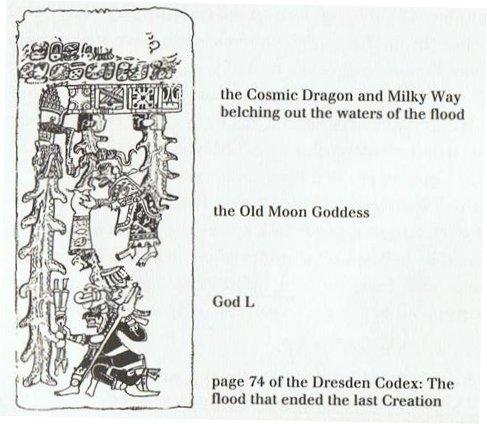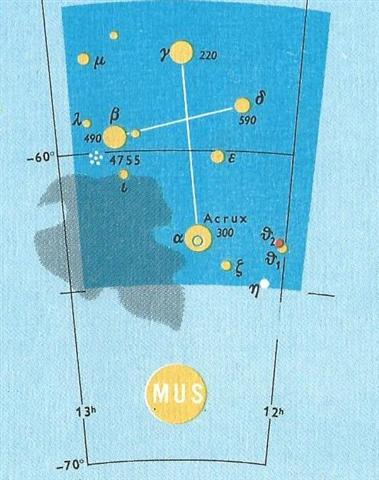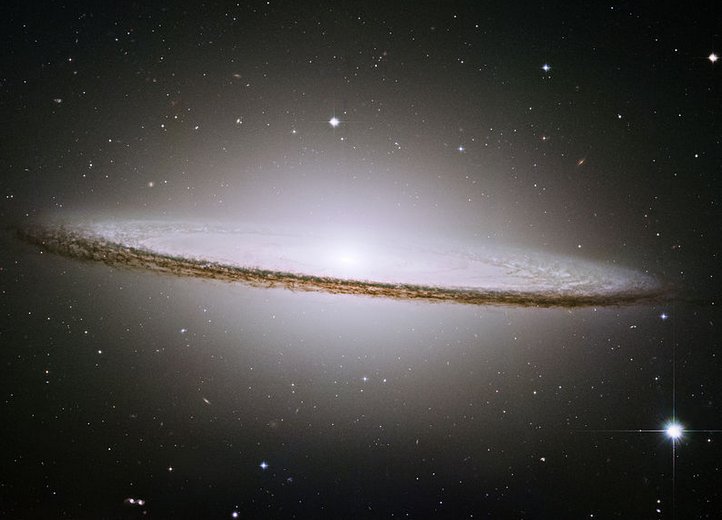The 2nd (Rear) Spout (Al Fargh al Thāni) was
evidently depicted on the last (most important) page of the Dresden Codex:

It was the
Uniter, the 27th Mansion of the Moon according to
Ibn‘Arabi (ca 1200 AD). This name, we can guess, probably referred to
its function as connecting the previous (Old) cycle with the new
One - at Oh, at the Topknot (Tikitiki) of Andromeda:

.... Though Andromeda has its roots most
firmly in the Greek tradition, a female figure in Andromeda's
place appeared in Babylonian astronomy. The stars that make up
Pisces and the middle portion of modern Andromeda formed a
constellation representing a fertility goddess, sometimes named
as Anunitum or the Lady of the Heavens ...
... Yes, said the maiden. She
stretched out her right hand, up there in front of the bone. And
then the bone spit out its saliva, which landed squarely in the
hand of the maiden. And then she looked in her hand, she
inspected it right away, but the bone's saliva wasn't in her
hand. It is just a sign I have given you, my saliva, my spittle.
This, my head, has nothing on it - just bone, nothing of meat.
It's just the same with the head of a great lord: it's just the
flesh that makes his face look good. And when he dies, people
get frightened by his bones. After that, his son is like his
saliva, his spittle, in his being, whether it be the son of a
lord or the son of a craftsman, an orator ...
| |
Maui mua |
Maui roto |
Maui taha |
Maui pae |
|
Maui tikitiki |
|
*0 |
*92 |
*183 |
*274 |
*0 |
|
day 80 |
day 172 |
day 263 |
day 354 |
day 80 |
|
91 |
183 |
274 |
365 |
24 * 19 = 91 |

The beginning of the C text was when the Full Moon was at day zero (0h), i.e. at
ε Phoenicis,

which was located at the same right ascension day as the Navel of the
Pegasus Horse (Sirrah), viz. at the
place of the Rear Spout. This was a day of mourning and of high spirits:
|
Egyptian
jubilation |
 |
Phoenician he |
 |
Greek epsilon |
Ε (ε) |
|
Wikipedia points at the Egyptian
gesture with arms held high as a Sign of jubilation,
which may have been the origin (via Phoenician he)
of epsilon.

 |
... Certain
Polynesian customs can more easily be understood by us if
they are seen as a straight reversal of things we do
ourselves. The Maori custom of weeping over friends or
relatives when they return, rather than when they go
away, is one example, which has a logic not impossible to
grasp. A similar straight reversal is found in regard to
food. The Polynesian notion of the lowest thing, the most
devoid of sacredness, was cooked food: not what comes
out of the body, but what goes into it ...
|
no glyph |
 |
 |
 |
 |
|
Ca1-1 |
Ca1-2 |
Ca1-3 |
Ca1-4 |
|
Sept 20 (263) |
21 |
Equinox |
LONG SAND-BANK |
24 (*187) |
|
CLOSE TO THE
FULL MOON: |
|
REAR SPOUT (0h) |
ALGENIB PEGASI |
March 23 |
24 |
Julian equinox (84) |

... After the
great flood had at long last receded, Raven had gorged
himself on the delicacies left by the receding water, so for
once, perhaps the first time in his life, he wasn't hungry.
But his other appetites, his curiosity and the unquenchable
itch to meddle and provoke things, to play tricks on the
world and its creatures, these remained unsatisfied.
Raven gazed up and down the beach.
It was pretty, but lifeless. There was no one about to
upset, or play tricks upon. Raven sighed. He crossed his
wings behind him and strutted up and down the sand, his
shiny head cocked, his sharp eyes and ears alert for any
unusual sight or sound. The mountains and the sea, the sky
now ablaze with the sun by day and the moon and stars he had
placed there, it was all pretty, but lifeless. Finally Raven
cried out to the empty sky with a loud exasperated cry. And
before the echoes of his cry faded from the shore, he heard
a muffled squeak. He looked up and down the beach for its
source and saw nothing. He strutted back and and forth,
once, twice, three times and still saw nothing. Then he
spied a flash of white in the sand. There, half buried in
the sand was a giant clamshell. As his shadow fell upon it,
he heard another muffled squeak. Peering down into the
opening between the halves of the shell, he saw it was full
of tiny creatures, cowering in fear at his shadow ...
The March
25 equinox (determined by the Sun) followed 183 + 4 (the difference between the dates
for the Julian and the Gregorian equinoxes) = 187 glyphs (days) later at Ca7-19.
And at heliacal ε Crucis just before Acrux (*5.0 + *365 / 2 = *187.5) the
reading of Metoro Tau'a Ure (for Bishop Jaussen on
Tahiti) was kua moe:
|
4th period, days 1-4: |
 |
 |
 |
 |
|
Ca7-17 |
Ca7-18 |
Ca7-19 (4 + 183) |
Ca7-20 (188) |
|
tagata - marama |
tagata |
kua moe |
puhi te ahi - rave i te ika |
|
Moe.
To sleep, to lie at full length, to
dream, to brood, to place, to cohabit; moe atu,
to leave off, to desist; moe atu ra, to
adjourn, to postpone; moe hakahepo, to talk
in the deep; moe aherepo, somnambulist,
sleepwalker; moe hakataha, to sleep on
the side; moe no, to oversleep, concubinage;
moe tahae, to be a light sleeper; moe
tahaga, a sleeper; moe vaeahatu,
moe hakaroa, to sleep sprawling; rava moe,
to sleep sound; ariga moe ki raro, to
lie flat on the ground; tae moe, bachelor;
hakamoe, to brood, to fold the wings; to
reserve, to lay up; to struggle. P Pau.: moe,
sleep. Mgv.: moe, sleep, to lie down, coitus,
to shut the eyes. Mq.: moe, to sleep, to lie
down; haámoe, to set down on the ground. Ta.:
moe, to sleep, to lie down. Moea raruga,
lying flat. Moeaivi, thin. Mq.: ivi,
haáivi, id. Ta.: ivi, id. Moega,
mat. Pau.: moehega, bed. Mgv.: moega,
a sleeping mat. Mq.: moena, moeka,
mat, floor cloth, bed. Ta.: moea, bed.
Moemata, to sleep with the eyes open; mea
moemata, phantom. Moemoea, a dream,
vision; tikeahaga moemoea, apparition
by night. T Mgv., Mq., Ta.: moemoea, dream.
Churchill. Mgv. Moemoe, to steal, to purloin
at a food distribution. Mq.: moemoe, to
seize, to grasp. Churchill. Ta.: 1. Moemoe,
ambush. Ha.: moemoe, id. 2. Moemoe,
Phyllanthus simplex. To.: mohemohe, a tree.
Churchill. Mq.: Moehu, exiled, banished,
prisoner of war. Ma.: morehu, a survivor.
Churchill. |
|
χ Pegasi (2.1), θ Andromedae (2.7) |
σ Andromedae (3.0), ι Ceti (3.3), ζ Tucanae (3.5), ρ
Andromedae, π Tucanae (3.7) |
no star listed (4) |
ANKAA (*) =
α
Phoenicis,
κ
Phoenicis (5.0)
ALPHARD (α Hydrae) |
|
March 23 |
24 |
Julian equinox (84) |
26 |
|
CLOSE TO THE
FULL MOON: |
|
Hasta-13 (Hand) /
Chariot-28 (Worm)
GIENAH
(Wing) = γ
Corvi
(185.1),
ε
Muscae (185.2),
ζ
Crucis (185.4),
ZANIAH
(Corner) = η
Virginis
(185.9)
*144.0 = *185.4 - *41.4 |
CHANG SHA (Long Sand-bank)
=
ζ
Corvi
(186.3) |
INTROMETIDA (Inserted)
=
ε
Crucis
(187.4),
ACRUX (†)
=
α
Crucis
(187.5)
*146.0 = *187.4 - *41.4 |
γ Com. Berenicis (188.0), σ Centauri (188.1),
ALGORAB = δ Corvi
(188.5),
GACRUX
= γ Crucis
(188.7) |
|
Equinox (265) |
Sept 23 |
24 (84 + 183) |
25 |
 |
|
4th period, days 5-8: |
 |
 |
 |
 |
|
Ca7-21 |
Ca7-22 |
Ca7-23 |
Ca7-24 (192) |
|
te kava |
erua marama |
e marama noho i tona nohoga |
te hare pure e tagata noho ki roto |
|
Pure. Cowrie (Cypraea caput draconis);
pure vaka, another type of cowrie, which can
float on the sea like a diminutive boat (vaka).
Vanaga. 1. To pray, to supplicate, invocation,
prayer; hare pure, church, chapel; tae
pure, irreverence; purega, prayer P Pau.,
Mgv., Mq., Ta.: pure, to pray. In Samoa,
Tonga, Niuē, Futuna,
Uvea, pule
means to command. 2. A shell T. P Pau.:
hakapurepure, to dye, to color. Mq.: pué,
the porcelain shell. Ta.: pure, a mark.
Purepure, spotted, dappled; ragi purepure,
dappled sky. Purepurea, spotted. P Pau.:
hakapurepure, to dye, to color. Mgv.:
purepure, printed cloth; akapurepure, to
paint in different colors. Mq.: puépué,
covered with pale scars. Ta.: purepure,
spotted, dappled. Churchill.
Pureva,
rock, stone (small enough to be thrown by hand).
Vanaga. Pureva,
to throw a stone. Ta.:
Pureva, to be on the eve of going.
Ha.: puleva,
to float here and there. Churchill. Pau.:
Pure-hiva, a butterfly. Mgv.: pure-rehue,
id. Ta.: pure-hua, a moth. Mq.: pure-hua,
id. Ma.: pure-hua, id. Churchill.
Roto. 1. Inside. 2. Lagoon (off the
coast, in the sea). 3. To press the juice out of a
plant; taheta roto pua, stone vessel used for
pressing the juice out of the pua plant, this
vessel is also just called roto. Roto o
niu, east wind. Vanaga. 1. Marsh, swamp, bog;
roto nui, pond; roto iti, pool. 2.
Inside, lining; o roto, interior, issue;
ki roto, within, into, inside, among; mei
roto o mea, issue; no roto mai o mea,
maternal; vae no roto, drawers. Churchill.
Ana-roto.
Spica. |
|
March 27 |
28 |
29 (88) |
30 (272 - 183) |
|
λ Phoenicis (6.3), β Tucanae (6.4)
*330.0 = *6.4 - *41.4 |
ANDROMEDA GALAXY (M31),
π Andromedae (7.7) |
ε Andromedae (8.2),
DELTA = δ
Andromedae
(8.4),
SCHEDIR
(Breast)
= α Cassiopeiae
(8.6), ζ Andromedae,
μ Phoenicis
(8.9)
*332.0 = *8.4 - *41.4 |
ξ
Phoenicis (9.0),
ρ
Tucanae (9.1),
DENEB KAITOS (Tail of the Sea Beast)
=
β Ceti,
η
Phoenicis
(9.4),
AL NITHĀM (String of Pearls)
=
φ¹
Ceti
(9.6)
*333.0 = *9.4 - *41.4 |
|
CLOSE TO THE
FULL MOON: |
|
γ
Muscae (189.0),
AVIS SATYRA (Bird of the Satyrs) =
η
Corvi
(189.3),
ASTERION (Starry) =
β
Canum Ven.
(189.5),
KRAZ = β Corvi,
κ Draconis (189.7) |
α Muscae (190.2), τ Centauri (190.5), χ Virginis
(190.7)
ALDERAMIN (α Cephei) |
Al Áwwā'-11 (The Barker) /
Shur-mahrū-shirū-18 (Front or West Shur)
SOMBRERO GALAXY = M104 Virginis
(191.1),
ρ
Virginis (191.4),
PORRIMA =
γ
Virginis,
γ
Centauri (191.5)
*150.0 = *191.4 - *41.4 |
ι Crucis (192.2), β Muscae (192.5),
MIMOSA
= β Crucis
(192.9) |
 |
|
Sept 26 |
27 |
28 |
Sept 29 (2 * 136) |
The First (Fore) Spout (Al Fargh al Mukdim) marked the
beginning of the Pegasus Square.
|
2nd period, days 1-5: |
 |
 |
 |
 |
 |
| Ca6-25 |
Ca6-26 |
Ca6-27 |
Ca6-28 (168) |
Ca7-1 |
| FOMALHAUT |
March 4 (*348) |
FORE SPOUT |
23h (*350.0) |
7 (431 = 66) |
|
CLOSE TO THE
FULL MOON: |
| Sept 1 (244) |
ALKES (*165) |
3 |
11h (*167.4) |
5 (80 + 168) |
|
2nd period, days 6-11: |
 |
 |
 |
 |
 |
 |
| Ca7-2 |
Ca7-3 |
Ca7-4 |
Ca7-5 |
Ca7-6 |
Ca7-7 (175) |
The present limit of the celestial polar regions can be defined
from the declination of the star
γ
Andromedae. Its current
place is at declination 42º 05' N. In other words the measure
across the polar regions should be 2 * (90º - 42º 05') = 2 * 47º
55' = 95º 50' or around 96º.
The width of the polar regions
is thus around 2 * 96º =
192º and 360 - 192 =
168 = 2 *
84 (→ Julian spring equinox).
.jpg)
.jpg)
|




















.jpg)
.jpg)